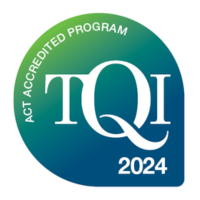Are you looking for Student Representative Council ideas to engage your school community?
SRCs play a crucial role in amplifying student voices and fostering engagement. They provide students with an opportunity to actively participate in decision-making processes and contribute to the development of their schools.
SRCs can provide a voice on a range of school-related issues, such as school rules, how students are taught in class, ideas for improving wellbeing, improvements to the school’s grounds, and much more.
Students can integrate ideas from their peers into plans for the year, supported by their SRC Coordinator.
These eight ideas aim to enhance student voice, foster leadership skills, promote wellbeing, and create a culture of inclusivity.
Create the right environment for a student-led SRC
SRC engagement is not about telling student representatives what they should focus their time on. Instead, it’s about opening a school up to student voice, initiative and participation.
When students feel like their views are valued and listened to, they’re more likely to work enthusiastically with other stakeholders, canvass peers, put forward ideas and make decisions.
They are much more engaged in their roles and will bring forward student-led initiatives. With the right environment and training, what initiatives could be just waiting to be proposed in your school?
It’s worth taking the time to train your student representatives, so they feel equipped and empowered in their positions. Peer Support offers SRC training to teachers who are SRC coordinators. Peer Support offers training for teachers who are SRC Coordinators. The training includes a workbook and resources to train their student representatives.
Empower students to support their own wellbeing
A focus on wellbeing is critical in a post-Covid environment, given only 11 per cent of children in Australia reported experiencing no mental health impacts from the pandemic.
SRCs can become allies in identifying wellbeing issues. They can respond through activities, events or programs, including organising mental health awareness campaigns, yoga or meditation sessions.
Ask your SRC for input on the school environment
Would your school benefit from murals, more recycling facilities, or new soccer balls? What advice could students offer when it comes to improving gardens, seating, toilets or canteen facilities?
One school in Victoria, for example, told the Victorian SRC they would have put new bubblers in the wrong places without student feedback!
Invite input into teaching and learning
Schools may baulk at being ‘taught how to teach’. However, students can be powerful sources of feedback on what they find effective and engaging to support better learning outcomes.
SRCs could provide feedback on curriculum and what they want to see more of in lessons, share common learning challenges, pitch excursion ideas, or shape how tech is used in the classroom.
There may be opportunities to invite students to have their say on decisions that effect their learning. You could, for example, ask for student input before purchasing new books for the classroom or library.
Use your SRC to help communicate school messages
SRCs can play a central role in contributing to or designing better all-round school communications.
This could involve contributing newsletters, noticeboards, websites and social media, having special assemblies, or participating in parent-teacher meetings.
Involve your SRC in events
Casual dress days, discos, musical performances and arts, science or maths competitions.
What lunch time sport or club activities interest your SRC? What social events? Could they advocate for team games between students and teachers, organise a talent show, or make carnivals better?
SRCs can have lots of great ideas for making school a fun place for kids.
Support your SRC to fundraise
Fundraising is a common responsibility for SRCs. SRCs can raise funds for the school or for initiatives like charities and organisations, food and clothing drives and more. Empower your SRC to choose which charities to support and how to raise money.
Fundraisers are a lovely way to support the community. Just make sure you give your SRC opportunities to engage with other activities too.
Encourage your SRC to take action
Empower your students to have a voice on issues they care about. How can your SRC get behind causes, like climate change? Do they want to take action? What can they do?
There may be teachers who can support your SRC with advocacy campaigns, such as writing letters to MPs, and contacting the local newspaper to share stories.
Case studies: Be inspired with these Student Representative Council ideas from two schools
Not every school would choose to have their logo designed by their own students.
But this is the path taken by one school that attended Peer Support Australia’s SRC Coordinator training. Through their SRC, the school’s student body was canvassed for their ideas on what features should go into the logo. Student feedback was then fed to a graphic designer to come up with a final design.
In this case, the SRC and students were not an afterthought. Instead, they were engaged by being taken into the process all the way through. They were there right alongside the adults making the decisions. Now, they are said to be wearing their new logo they helped design with pride.
The SRC of Brauer College in Victoria is another example. Identifying a problem with morale and discussion around mental health, impacting wellbeing, it launched the Emotional Support Rabbits project, becoming the first school in Australia to use rabbits as emotional support animals.
Awarded the Vic SRC’s Student-Led Project Award in 2022, the student-led initiative was successful in creating more discussion around mental health, removing stigma around its student wellbeing space, and is even being looked at by other SRCs and schools to see how it can help them.
Student Representative Council ideas FAQs
1. What is the purpose of a Student Representative Council (SRC)?
The SRC ensures that student voices are heard and included in school decision-making.
3. What are some effective ways to engage student voices?
Invite your SRC to be true partners in the decisions that effect their education. Get their input into the school environment, learning resources, events, and wellbeing initiatives. Include your SRC input into your communication platforms.
4. How can SRCs ensure diverse representation?
SRCs should actively seek input from students of different backgrounds and experiences. Encourage diverse membership to reflect the school’s demographics and include different voices, such as students with disability or from culturally and linguistically diverse backgrounds.
Improve school-wide student wellbeing
Better support student mental health through a peer-led approach to wellbeing, trusted by 620+ schools Australia-wide.





